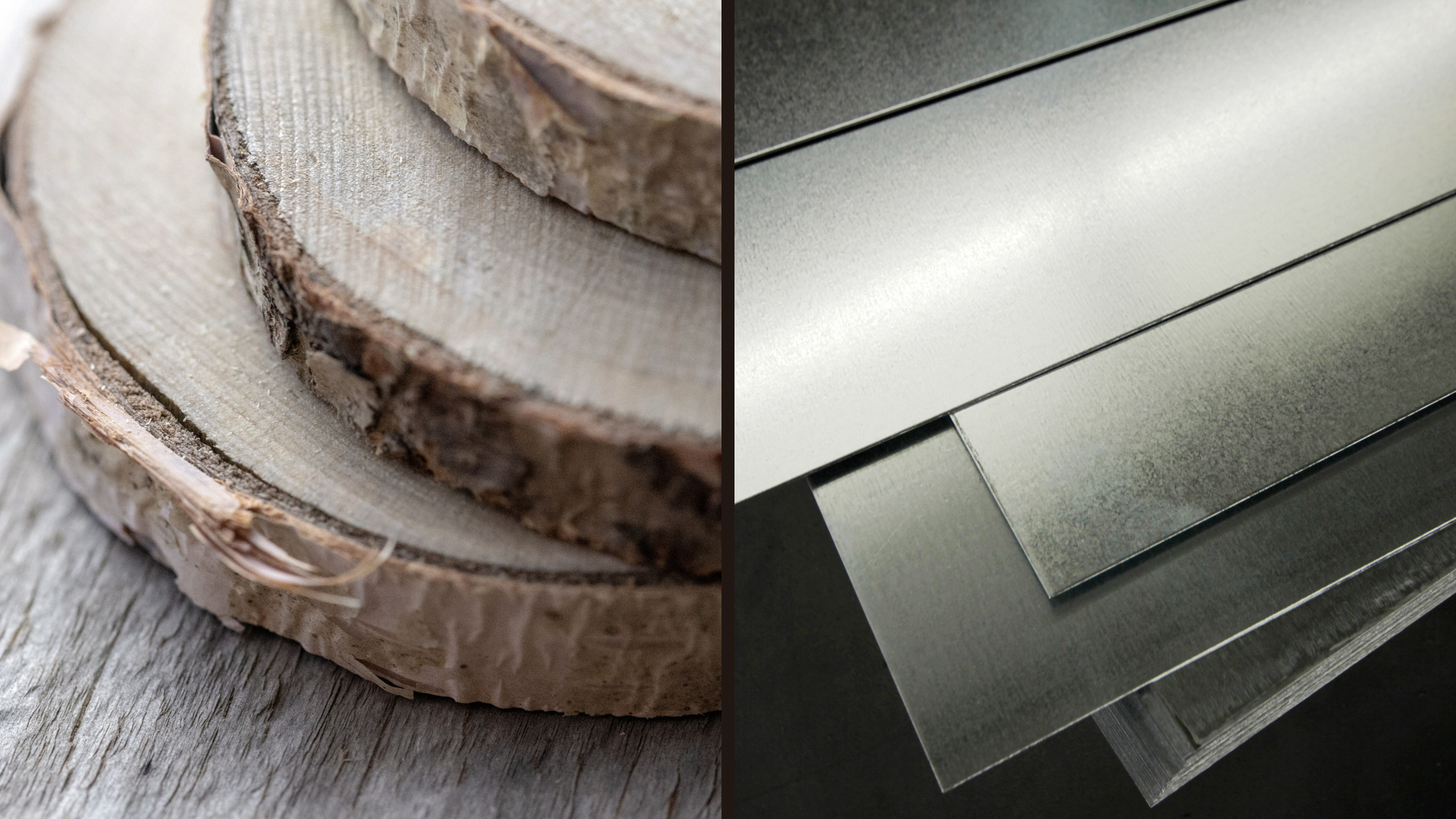Wood vs Metal: What is the Best Choice?
There are a number of factors to consider when choosing materials for your renovation or refresh construction project. The biggest question we find our customers asking is, what is better: wood or metal. When deciding between wood vs. metal, we want to look at the longevity of the product, the cost and the sustainability.
Longevity
When choosing your materials, you want something that is going to last and keep your investment protected. You’ll want to consider:
Strength
Water and heat resistance
Resilience to corrosion or deformation
Steel has a high strength ratio and takes a long time to fail or break down. We can also easily predict the lifespan that steel will have as its properties don’t change much with time. Unfortunately, it can easily rust and scratch, especially in wet and high-use settings.
Wood is relatively lightweight but can outperform steel in terms of supporting its own weight, so it is just as strong or stronger in some cases, as steel.
Wood is very resistant to heat, whereas steel is not as resistant, so in a setting where extreme heat is a factor, wood might be the better choice.
Wood can shrink and swell when introduced to water and can also decay and deteriorate. Mold and insects then become a concern. Fortunately, Archmill uses a specific type of birch for their millwork that is treated for water resistance and performance under wet conditions, such as in a quick-serve kitchen.
Cost
Cost is definitely a factor when it comes to choosing the materials for your business. While you never want to go with the cheapest option, weighing out cost vs. practicality will help you make the right choice.
Steel is very expensive to produce. The rising price of steel is having a great impact on how often it is being used in building applications.
Wood, while not cheap in any sense, is a more economical option than steel. It is also more adaptable on-site and flexible in its use. Wood is available in a variety of types, products and dimensions. It is also lighter in volume/weight, which amounts to cost savings.
Sustainability
Sustainability isn’t just a buzzword any longer, especially when it comes to building and renovating. Preserving our natural resources is a top priority for Archmill House and we strive for LEED certification in all of our projects. This includes:
Sustainable site development
Water efficiency
Energy efficiency
Indoor environmental quality
Material selection - this is where the choice of wood or metal comes in
In a study by the Canadian Wood Council, the environmental impacts of wood and steel were studied. Wood was found to have the least impact on the environment when sourced sustainably. It uses fewer natural resources and it does not release as many contaminants into the air and water.
Steel was found to have:
23% more impact on the climate
74% more negative impact on air quality
247% more negative impact on water quality
1.8 times higher greenhouse gas emissions over wood
Unlike steel, wood can be locally sourced and is the most sustainable choice if used responsibly through replanting and forestry management (FSC® - certified products).
Steel can be a good choice because it contains high percentages of recycled content, but when steel is no longer needed in buildings, it has to be discarded and is almost impossible for it to break down naturally. Wood, on the other hand, can decompose when discarded and can even replenish the soil in the process. Even sawdust can be recycled, so every part of the materials is used in some way.
A new, more sustainable wood product
Baltic Birch is a new product known as the “next generation of wood”. It consists of multiple ply layers of birch veneer, making it stronger, more stable and more versatile in application. Archmill includes a 10-year warranty on its core, which means longevity is optimized. They also use a waterproof phenolic glue to make this product even more resilient to moisture and humidity. In testing scenarios, after months of being submerged, the product did not swell. This makes it an ideal choice in situations where wetness, like in food and beverage applications is a factor.
As a choice in the wood vs. metal debate, Baltic Birch removes some of the cons of wood, making it a better choice all-around. A Baltic Birch system fully installed is 20% less expensive than metal. You can get it pre-assembled with a quick install. It is a premium product so upfront costs may be higher, but it lasts longer and offers lifecycle savings.
To learn more about how our products can improve your interior space, fill out the form below and one of our experts will contact you.


